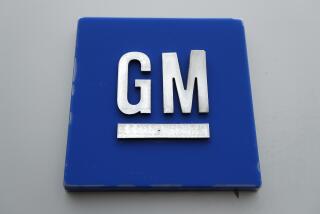FAA Orders Pratt & Whitney Jet Engine Checks
- Share via
WASHINGTON — The Federal Aviation Administration Thursday ordered the nation’s airlines to begin inspecting a widely used Pratt & Whitney jet engine for possible cracks that could lead to a rupture of the outer case of its combustion chamber and cause accidents in flight.
The FAA directive applies to most versions of Pratt & Whitney’s JT8D engine, the basic engine used by virtually all major U.S. airlines for their Boeing 727, Boeing 737 and DC-9 aircraft.
The inspection order, which is not expected to affect flight schedules, applies to a metal “sleeve” that is attached to the engine by a circular flange. Because the outer case covers the engine’s combustion chambers, it is subject to high temperatures and stress.
Effects of Fatigue
Fatigue in these high-stress areas could cause cracks and rupture the case, leading to engine shutdowns in flight, release of the engine cowling or damage to the air frame, the FAA’s airworthiness directive said.
“It has the potential for causing an accident,” FAA spokesman Fred Farrar said. “That’s why we want them checked.”
According to the FAA, there have been 35 instances of rear flange cracks reported on the outer cases of the combustion chambers.
In two recent instances, however, the outer cases themselves ruptured, the agency said. One case involved an Eastern Airlines DC-9 that took off from the airport at Tampa, Fla., last fall. After discovering the problem, the pilot returned to the airport and there were no injuries. A similar incident earlier last year involved a Delta Airlines DC-9 that returned safely to the airport in Richmond, Va.
The inspection order, which takes effect at the end of this month, will require visual inspections using a large mirror attached to a pole. If any cracks are found, the outer casing must be replaced.
Focus on Older Engines
The order primarily affects older JT8D engines that have been in service 9 or 10 years and have acquired 25,000 or 35,000 “cycles,” or takeoffs and landings.
Farrar said the inspections would not have “any big effect” on airline schedules.
Phil Giaramita, spokesman for Pratt & Whitney, the world’s largest producer of jet engines, said that the FAA action is similar to previous recommendations that the company has made over the last two years to airlines using these engines.
“This is really in the area of preventive maintenance,” Giaramita said of the FAA directive, adding that some airlines already have conducted inspections. “We certainly support the FAA and will do all we can to help our customers meet this requirement.”
The JT8D engine, which first went into service in 1964, is the most widely used engine in commercial aviation. There are about 12,500 in use worldwide among 300 airlines, with about 5,000 engines in use by domestic airlines, Giaramita said.
Increased Scrutiny
The engines, which sell for $1.6 million to $2.2 million and have been considered among the most reliable in the aviation industry, have come under increased scrutiny in recent months after a number of accidents.
Last August, the FAA ordered inspections of Pratt & Whitney engines on more than 1,000 planes for possible cracks in the combustion chambers after an Aug. 22 accident involving a British Airtours Boeing 737 airliner on takeoff at Manchester, England. A total of 54 people were killed in the crash.
Giaramita said the focus of investigators in that accident was on the actual burner cans in the combustion chamber of the JTD-15 engine, not the outer combustion chamber case cited in the FAA’s Thursday order.
More to Read
Inside the business of entertainment
The Wide Shot brings you news, analysis and insights on everything from streaming wars to production — and what it all means for the future.
You may occasionally receive promotional content from the Los Angeles Times.










